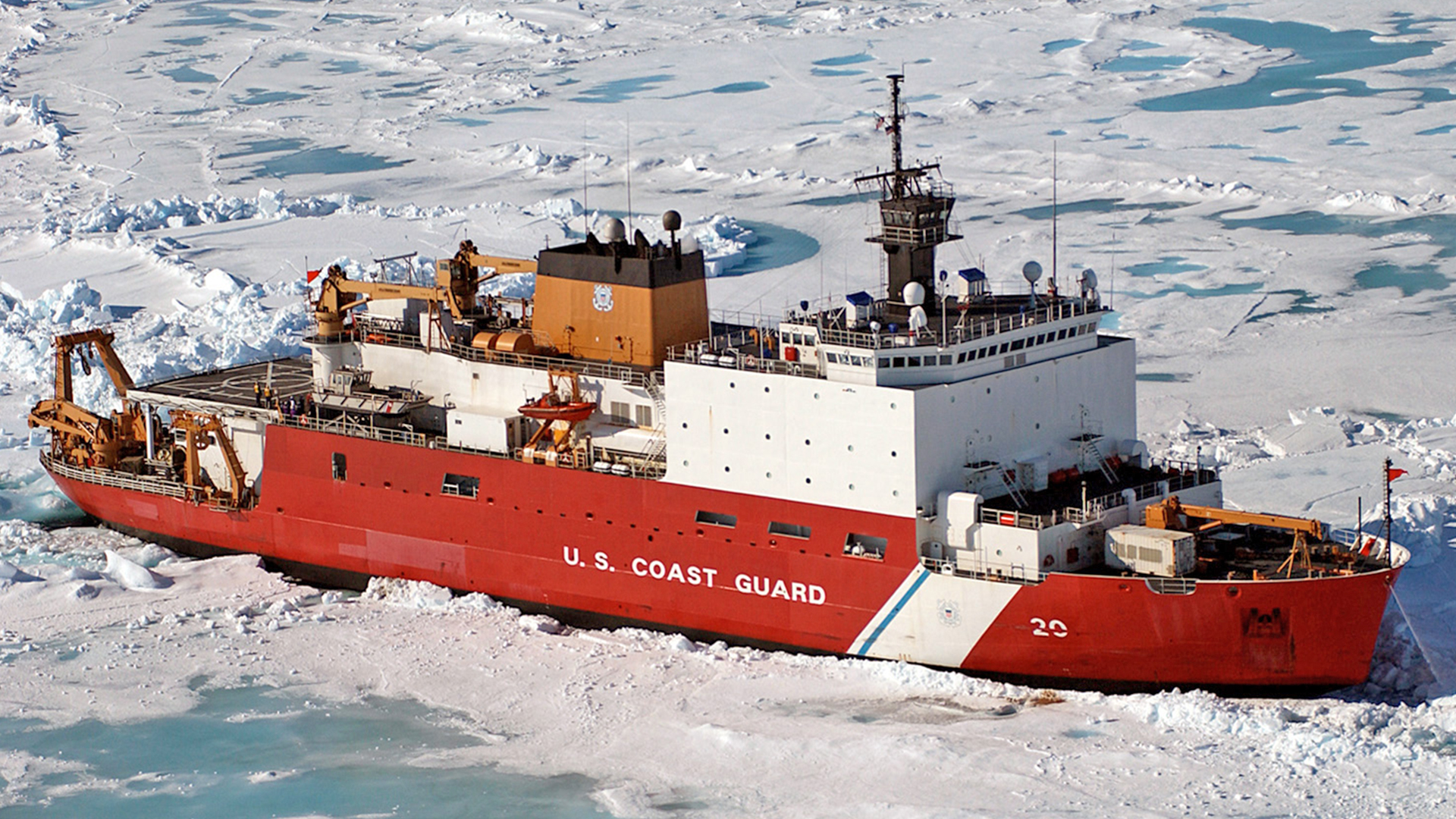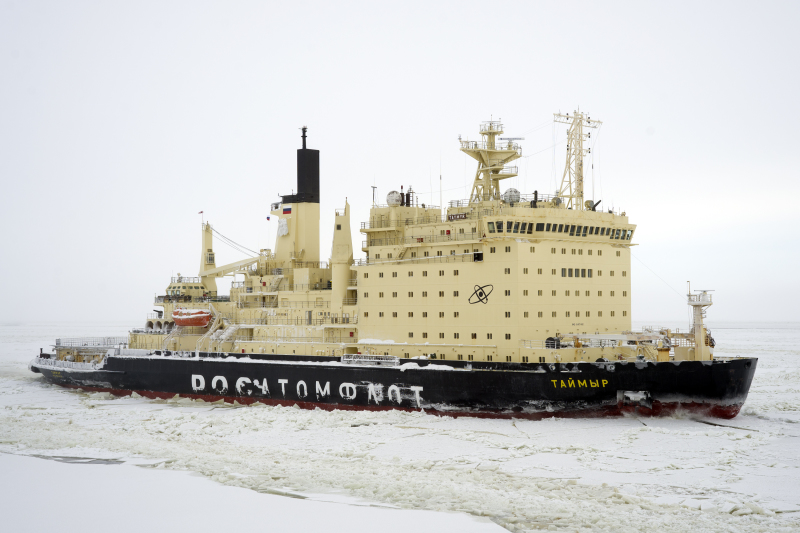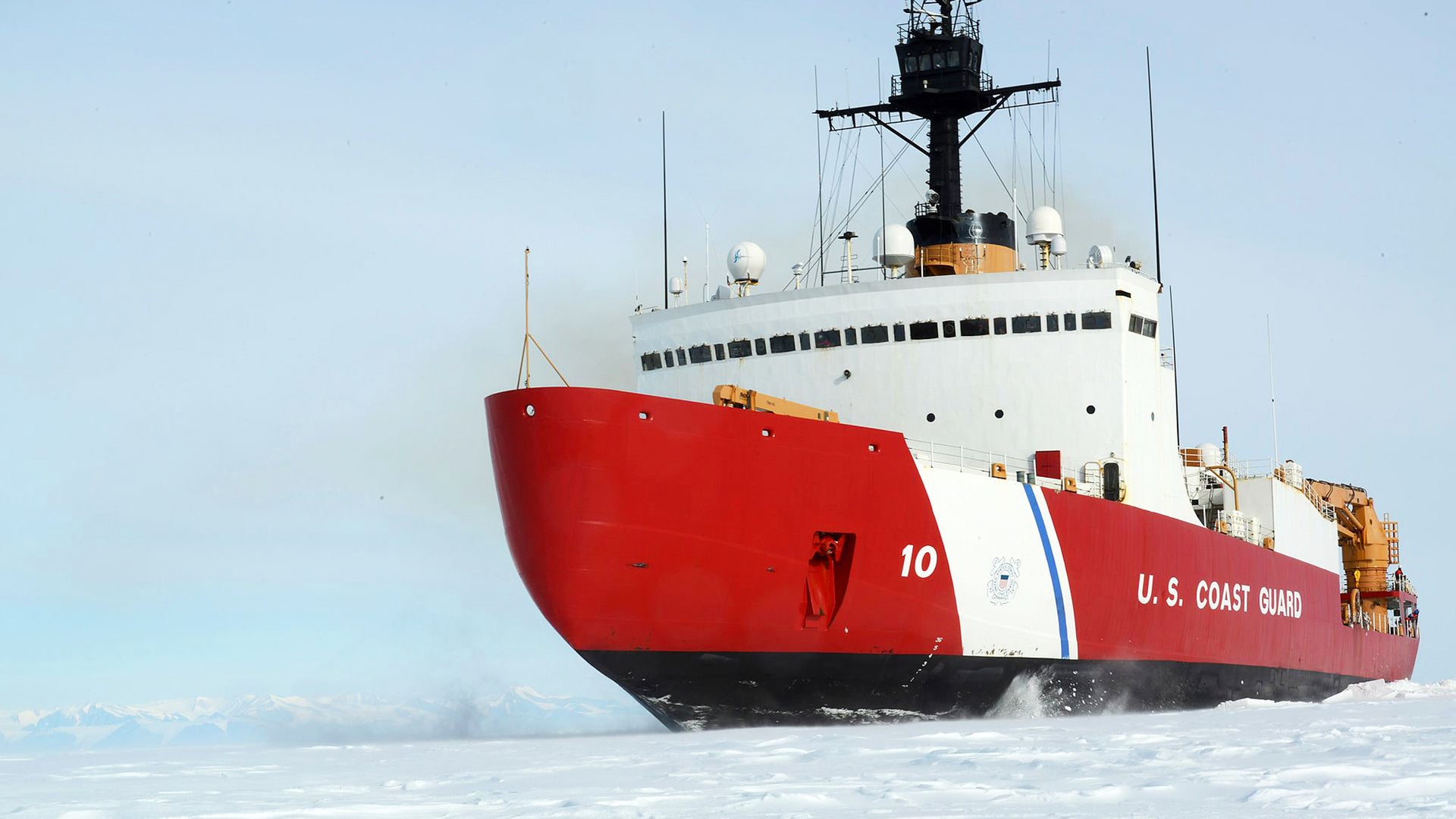As Russia is building literally a new armada of new icebreakers, ice-capable supply ships, a massive arctic “research” submarine and icebreaker surface combatants armed with cruise missiles, the Pentagon is now looking at arming its relatively tiny fleet of future icebreakers with similar weapons as well.
The revelation came during a House subcommittee on Homeland Security hearing where Coast Guard Commandant Admiral Paul Zukunft was discussing the service’s plans to build three new medium icebreakers, with the first delivery occurring by 2023. A major design study is underway now and the nature of the icebreaker’s capabilities still remain up for debate, but the ability to add heavy weapons is something USCG is now interested in, with the admiral stating:
“We need to look differently at what an icebreaker does… We need to reserve space, weight and power if we need to strap a cruise missile package on it… U.S. presence in the Arctic is necessary for more than just power projection; it’s a matter of national security… If they remain unchecked, the Russians will extend their sphere of influence to over five million square miles of Arctic ice and water.”
The Commandant continued:
“The advantage you have when you’re building national security cutters and now you’re making these more affordable in the long run, you have a hot production line… Maybe, you know, 10, 12 years from now the world changes, but at least you’re producing these at an affordable price, a predictable price, and on schedule.”

Basically the idea is that with a hot icebreaker shipbuilding line, and a shipbuilding industry that knows how to make them, new capabilities can be inserted into designs already in production, or new ships could be built altogether without having to “spin up” icebreaker construction from scratch, which is a costly affair.
Right now there are only two active icebreakers at the USCG’s disposal and one is a 40 year old Polar class ship that is running on parts cannibalized from its sister ship. The other is the more modern, but still nearly 20 year old, Healy. And these ships have to be split between the the Arctic and Antarctica. The National Science Foundation also charters an icebreaker, but it is not a military ship.
The three icebreakers slated to be built in the near-term are medium icebreakers, capable of breaking through roughly eight feet of ice. Three heavy icebreakers are supposedly going to be built as well, but when or with what funds are anyone’s guess. Heavy icebreakers can smash their way though a whopping 21 feet of ice.
Russia’s designs on the Arctic couldn’t be more clear, I have been reporting on it for years, and Moscow continues building up the region with air defenses, deep water ports, airfields and massive outposts. They are also training their forces how to fight in such harsh and austere conditions on an unprecedented level. This stark reality offers a lot reason for the US not only quickly building new icebreakers, but arming those ships with high-end weaponry, including long-range cruise missiles. It would also provide some sort of counterbalance, although limited, against Russia’s new Ice class icebreaking corvettes that are capable of carrying containerized Club-K and Kalibr missiles.

It is possible that by adding major weaponry to its new icebreakers, including anti-ship and land-attack missiles, as well as potent defenses, the Coast Guard can make a better case as to utility and urgent need for these ships. Then again, doing so will only add to their cost, which would put even more pressure on the Coast Guard’s six new icebreaker goal.
Even if the USCG got all the new icebreakers it is asking for and retained Healy for another couple of decades, that would give the force seven hulls in total. By comparison, Russia has roughly 40 icebreakers already in service, with many more on the way.
Still, something is better than nothing, and nothing is nearly what the USCG has right now when it comes to its ice breaking capabilities.
Contact the author: Tyler@thedrrive.com
